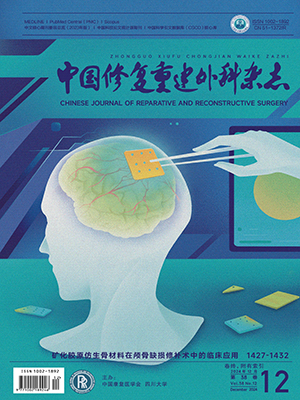OBJECTIVE: To observe the difference of the fracture reparation using autogeneic-iliac bone and allogenic bone. METHODS: Comminuted fracture of humerus in two sides were made in rabbits. Autogeneic-iliac bone was implanted in one side, while allogenic bone of equal capacity was implanted in the other side. General observation, X-ray, and HE histologic section were done when the rabbits were put to death in different stages. RESULTS: One week after implantation, the graft had been enclosed by connective tissue without infiltration of the inflammatory cells. At the 2nd week, the graft had been enclosed in osteoplastic granulation tissue, and the cartilage callus had formed. At the 3rd week, there had been broken sequestrum among the callus; the cartilage had actively formed the bone; and the medulla had been making. At the 4th week, the sequestrum had disappeared, and the mature callus had appeared; the osteoblasts had arranged in a line around the edge of the mature callus. At the 5th week, the callus was b, compact and approached mature bones. At the 6th week, there had been the compact lamellar structures and the complete haversian’s systems. There was no significant difference between callus of two sides by using image quantitative analysis in the 3rd, 4th week (P gt; 0.05). CONCLUSION: The allogenic bone has good histocompatibility and bone conduction effect, and can be used for bone transplantation substitute with autogenous-iliac bone.
Citation: WANG Zhi qiang,LI Qi jia,WANG Qi,et al.. PRELIMINARY RESULT OF ALLOGENIC BONE AND AUTOGENEIC-ILIAC BONE IN COMMINUTED FRACTURE REPARATION IN RABBITS. Chinese Journal of Reparative and Reconstructive Surgery, 2002, 16(6): 413-417. doi: Copy
Copyright © the editorial department of Chinese Journal of Reparative and Reconstructive Surgery of West China Medical Publisher. All rights reserved




